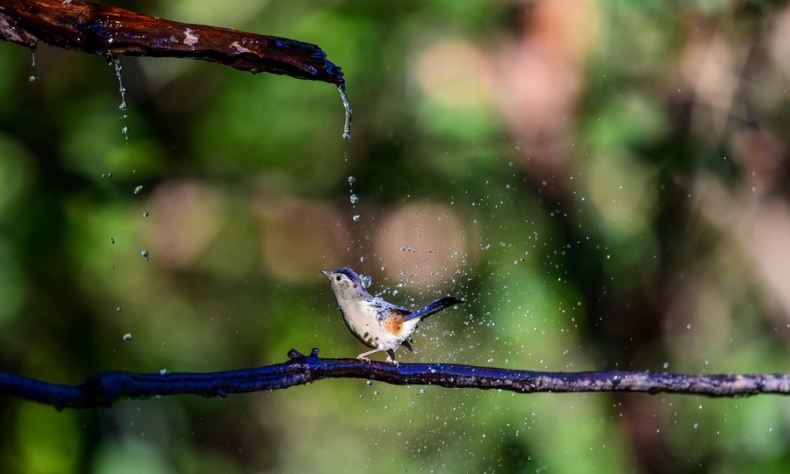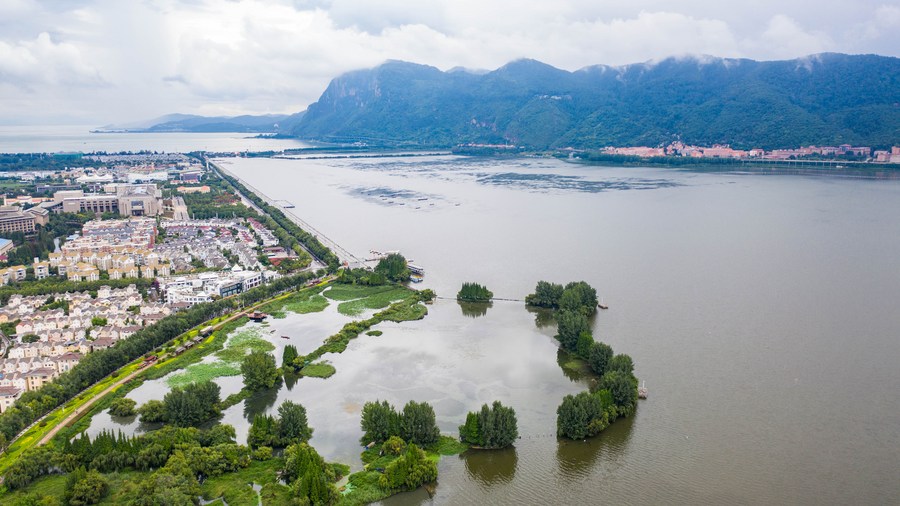China Must Step Up Efforts in Biodiversity Preservation

Ecological civilization has been translated into things that can be practiced, which includes ecological conservation, red lines which now exist across China, plus the war on air, and other forms of, pollution, accompanied by better safeguarding mechanisms for protected areas.
As a major global player, China will head up a substantial number of biodiversity protection endeavors, said Alice C. Hughes, a professor with the Xishuangbanna Tropical Botanical Garden under the Chinese Academy of Sciences.
In an interview with Beijing Review during the 15th Meeting of the Conference of the Parties to the Convention on Biological Diversity held in Kunming, the capital city of southwest China’s Yunan Province, Hughes shared her views on biodiversity and China’s conservation efforts. Edited excerpts follow:

Ecological security is critical, which is not just about preventing earthquakes and landslides and getting clean water. Ecological civilization is much more of a holistic concept on how environmental resources are actually put to use. Sustainability is about finding balance and achieving harmony for humans to maintain access to their resources. Today’s people need to adopt a long-term mindset about the state of the world and consider how the next generations will inherit other forms of wealth through biodiversity. Unsustainable practices are bad for the planet as protecting the environment means protecting us humans. For most species of which we do not possess the DNA to recreate them, it is much better to just stop that species from becoming extinct in the first place.
Real understandings of the factors spurring on biodiversity loss and how to mitigate against them are needed in order to translate goals into actionable targets. Furthermore, the monitoring thereof is of great significance. What we need is to create milestones to reach our objectives.
Biodiversity in China
Ecological civilization has been translated into things that can be practiced, which includes ecological conservation, red lines which now exist across China, plus the war on air, and other forms of, pollution, accompanied by better safeguarding mechanisms for protected areas.
China recently issued a white paper entitled Biodiversity Conservation in China discussing how the country is conserving its ecosphere. It is a pretty comprehensive list looking at everything, even the preservation of germ plasma and genetic diversity, something not many countries are doing–certainly not on the scale China is.

According to Chinese President Xi Jinping during the general debate of the 76th session of the United Nations General Assembly in September, China will not construct new coal-fired power projects abroad. It is a big move, indicating that China is going to export its solutions, such as the concept of ecological red lines, which can help countries that are developing while destroying biodiversity to catch up.
While China has poured much effort into biodiversity over the past few years, the remaining steps in terms of making things more sustainable will be addressing problems brought on by the use of agrochemicals. To conserve global biodiversity, countries that import goods need to be aware of where those goods come from. China is aware of these issues, but its action plan is still in the earliest of stages and it needs to scale up these practices. China, with its vast population, is one of the biggest consumers of products such as palm oil from areas including Indonesia and Malaysia–which are forested. Efforts are needed to export sustainability through investing in supply chain tracking mechanisms.
There are some good regional initiatives in China. The authorities of Yunnan Province have launched the small populations project, which intends to put a halt to the extinction of rare species with small populations in the region. Much priority goes to animals like the giant panda, whereas some other species have not received that attention. Furthermore, the little ecosystems require additional attention.

The vitality of teamwork
International collaboration is critical, especially within the Association of Southeast Asian Nations. China needs to play a major role in facilitating sustainable development and conservation. Since it is now one of the biggest investors in infrastructure, it is supposed to develop green infrastructure, integrate ecological protection with transport connectivity and preserve instead of fragment the environment in development. The goal cannot be achieved without collaboration. Many rivers like the Mekong-Lancang River run through multiple countries. These countries all need to coordinate with one another to maintain diversity in the ecological function hidden within those systems.
Finance, too, is crucial in boosting international cooperation on biodiversity conservation. As China has one of the biggest green bond markets in the world, developing sensible and effective green finance mechanisms is going to be a critical feat on the agenda. Even for those countries at risk of defaulting on that topic, there are ways to exchange the debt for an increase in biodiversity areas. China is a major global player and will eventually and inevitably be heading up a significant number of those endeavors.
By taking into account and working with international expertise, the combined efforts can wield the biggest impact on biodiversity locally, nationally and even globally.
Source: Beijing Review
 Facebook
Facebook
 Twitter
Twitter
 Linkedin
Linkedin
 Google +
Google +










